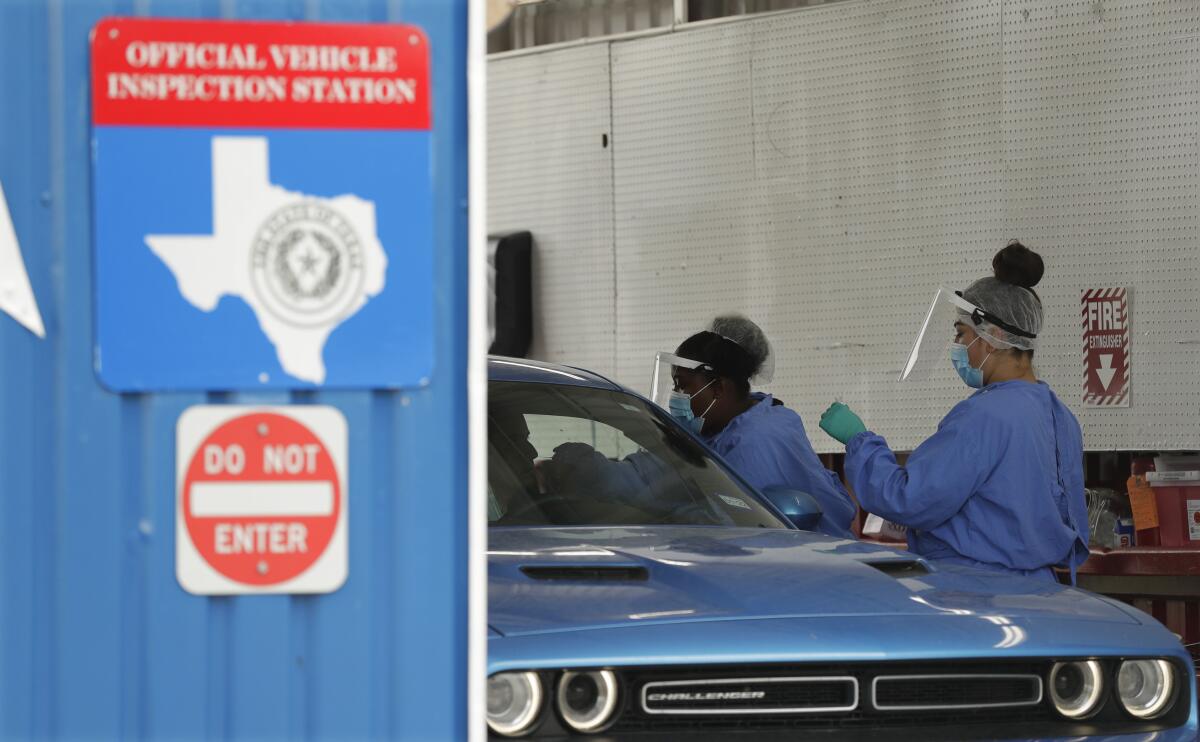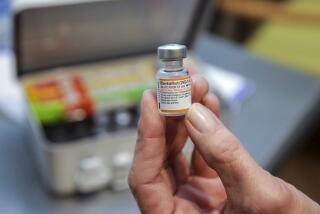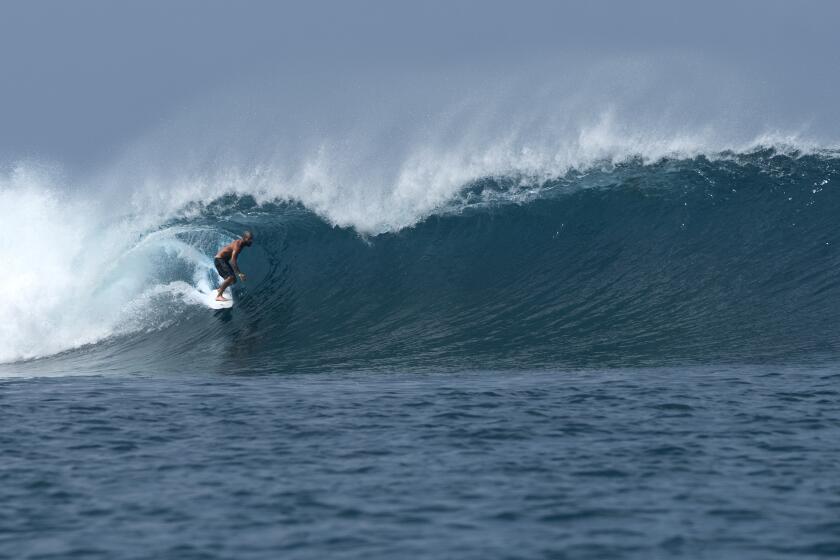Coronavirus deaths take a long-expected turn for the worse

- Share via
NEW YORK — A long-expected upturn in U.S. COVID-19 deaths has begun, driven by fatalities in the South and West.
The number of COVID-19 deaths per day had been falling for months and remained down even as such states as Florida and Texas saw explosions in cases and hospitalizations — and as reported daily U.S. infections broke records several times in recent days.
Scientists warned it wouldn’t last. A COVID-19 death, when it occurs, typically comes several weeks after a person is first infected with the coronavirus. Experts predicted that states that saw increases in cases and hospitalizations would, at some point, see deaths rise, too. Now that’s happening.
“It’s consistently picking up. And it’s picking up at the time you’d expect it to,” said William Hanage, an epidemiologist at the Harvard T.H. Chan School of Public Health.
According to an Associated Press analysis of data from Johns Hopkins University, the seven-day rolling average for daily reported deaths in the U.S. has increased from 578 two weeks ago to 664 on July 10 — still well below the heights seen in April. Daily reported deaths increased in 27 states over that time period, but the majority of those states are averaging fewer than 15 deaths per day. A smaller group of states has been driving the nationwide increase in deaths.
California is averaging 91 reported deaths per day; Texas is close behind, with 66. Florida, Arizona, Illinois, New Jersey and South Carolina also saw sizable rises. New Jersey’s recent jump is thought to be partially attributable to less frequent reporting of probable deaths.
The impact has already been felt by families who lost loved ones — and by the healthcare workers who tried to save them.
Rublas Ruiz, a Miami intensive care unit nurse, broke down in tears during a birthday dinner with his wife and daughter. He said he was overcome by the number of patients who have died in his care.
“I counted, like, 10 patients in less than four days in our ICU, and then I stopped doing that, because there were so many,” said the 41-year-old nurse at Kendall Regional Medical Center, who lost another patient Monday.
The virus has killed more than 134,000 people in the U.S. and more than 560,000 worldwide, according to Johns Hopkins University, though the true numbers are believed to be higher.
Deaths first began mounting in the U.S. in March. About two dozen deaths were being reported daily in the middle of that month. By late March, hundreds were being reported each day; in April, it was thousands. Most occurred in New York, New Jersey and elsewhere in the Northeast.
Deaths were so high in that region because the new virus was tearing through a densely populated area, quickly sweeping through vulnerable groups of people in nursing homes and other places, said Perry Halkitis, dean of the Rutgers University School of Public Health.
Many of the infections occurred before government officials imposed stay-at-home orders and other social distancing measures. The daily death toll started falling in mid-April — and continued to fall until about a week ago.
Researchers now expect deaths to rise for weeks, at least, but some think the count will not go up as dramatically as it did in the spring — for several reasons.
First, testing was extremely limited early in the pandemic, and it has become clear that unrecognized infections were spreading on subways, in nursing homes and in other public places before anyone knew exactly what was going on. Now testing is more widespread, and the magnitude of outbreaks is becoming better understood.
Second, many people’s behaviors have changed, with mask-wearing becoming more common in some places. And although there is no vaccine, hospitals are getting better at treating patients.
Another factor, tragically, is that deadly new viruses often first tear through vulnerable populations, such as the elderly and people weakened by other health conditions. That means that, in the Northeast at least, “many of the vulnerable people have already died,” Halkitis said.
Now, the U.S. is likely in for “a much longer, slower burn,” Hanage, the Harvard researcher, said. “We’re not going to see as many deaths [as in the spring]. But we’re going to see a total number of deaths, which is going to be large.”
Kristin Urquiza is worried things may get dramatically worse soon in at least some American cities, such as Phoenix, where her 65-year-old father died recently.
When the dangers of the virus first became known, Mark Anthony Urquiza, a quality assurance inspector, took precautions such as wearing a face mask and staying home as much as possible, his daughter said. But that changed after Gov. Doug Ducey ended Arizona’s stay-at-home order on May 15, eased restrictions on businesses and initially blocked local officials from requiring residents to wear masks.
By June 11, the elder Urquiza had developed a fever and cough. He was hospitalized and placed on a ventilator. He died June 30.
“His life was robbed. I believe that terrible leadership and flawed policies put my father’s life in the balance,” Kristin Urquiza said in an interview with the Associated Press.
Ducey, a Republican, has more recently changed direction, closing many businesses and allowing mayors to make mask-wearing mandatory.
But Kristin Urquiza is worried. Her father received the care at a time when beds in intensive care units were readily available. Now some Arizona ICUs are becoming swamped.
“Other families are not going to be reassured the hospitals will have the capacity to give [coronavirus] victims the dignity and the healthcare that they deserve. And that breaks my heart,” she said.
More to Read
Sign up for Essential California
The most important California stories and recommendations in your inbox every morning.
You may occasionally receive promotional content from the Los Angeles Times.










